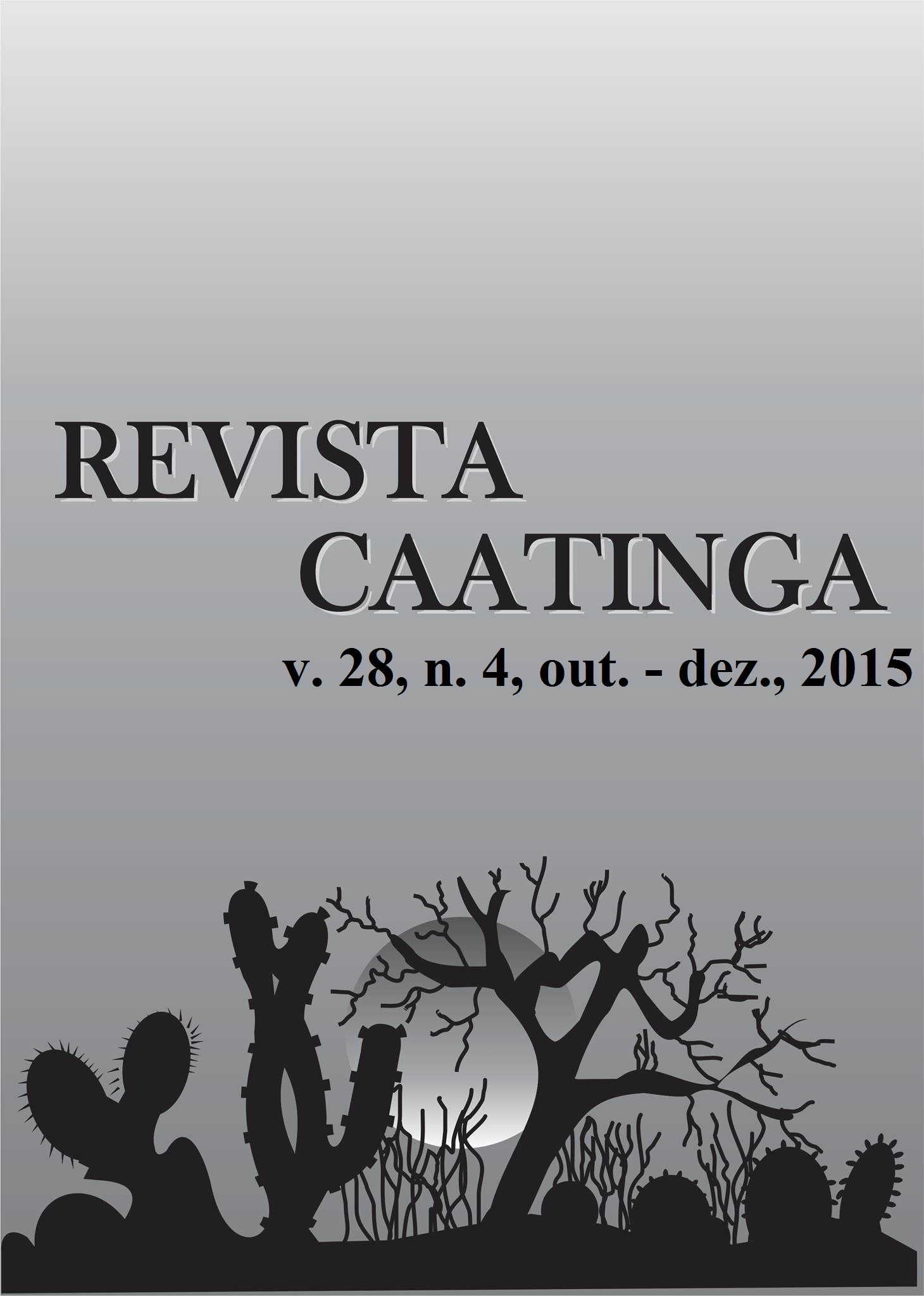HYDRAULIC AND TECHNICAL CHARACTERIZATION OF DRIPPERS NONSELF-COMPENSATING
DOI:
https://doi.org/10.1590/1983-21252015v28n418rcKeywords:
Evaluation. Drip. NBR ISO 9261.Abstract
This study aims to characterize and evaluate seven models of turbulent flow nonself compensating drippers available in the Brazilian market. The characterization of the emitters followed the procedures of the standards NBR ISO 9261. The experiment was conducted at UNESP University Estadual Paulista, Botucatu Campus, Department of Rural Engineering. For the execution of the test one randomly took from each coil, segments containing 25 emitters. In the evaluation of hydraulic and technical characteristics of emitters were determined the following parameters: coefficient of manufacturing variation, coefficients of the characteristic equation of the emitter, thickness of the tube wall, internal diameter, spacing between emitters, water pressure resistance at ambient temperature and 40 oC, the tensile strength of the tube with a tension of 160 N and 180 N, and premature aging testing. The analysis of the drip tapes showed a coefficient of manufacturing variation of less than 0.056 for all emitters. The exponents (m) of the equation pressure versus flow rate ranged from 0.431 to 0.575, classifying them as nonself-compensating. About the wall thickness, the internal diameter of the drip tapes and the spacing between emitters were found out that all measured values are within the required standard. From the results obtained, it can be stated that all products tested and available in the Brazilian market showed satisfactory performance and quality.Downloads
References
ANDRADE, C. de L. T de; BORGES JUNIOR, J. C. F. Seleção do método de irrigação. In: ALBUQUERQUE, P. E. P. de; DURÃES, F. O. M. (Ed.). Uso e manejo de irrigação. Brasília: EMBRAPA, 2008. cap. 7, p. 317-399.
ABNT. ASSOCIAÇÃO BRASILEIRA DE NORMAS TÉCNICAS. NBR ISO 9261: Equipamentos de irrigação agrícola. Emissores e tubos emissores. Especificação e métodos de ensaio. São Paulo, 2006.
BERNARDO, S.; SOARES, A. A.; MANTOVANI, E. C. Manual de Irrigação. 8 ed. Viçosa, MG: UFV, 2009. 625 p.
BURT, C. M.; STYLES, S. W. Drip and microirrigation for trees, vines, and row crops. San Luis Obispo: The Irrigation Training & Research Center, 2000, 261 p.
FRIZZONE, J. A.; DOURADO NETO, D. Avaliação de sistemas de irrigação e análise econômica. In: MIRANDA, J. H. de; PIRES, R. C. de M. (ed.). Irrigação. Jaboticabal: FUNEP, 2003. v. 2, cap. 15, p. 573-652.
FRIZZONE, J. A. et al. Microirrigação: gotejamento e microaspersão. Maringá: Eduem, 2012. 356 p.
GOMES, H. P. Engenharia de irrigação: Hidráulica dos sistemas pressurizados, aspersão e gotejamento. 2 ed. Ver. Ampl. Campina Grande, 1997. 390 p.
KELLER, J.; BLIESNER, R. D. Sprinkle and trickle irrigation. New York: van Nostrand Reinhold, 1990. 652 p.
LOPEZ, R. J. et al. Riego localizado. 2 ed. Madrid: Ediciones Mundi Prensa, 1997. 405 p.
MANTOVANI, E. C.; BERNARDO, S.; PALARETTI, L. F. Irrigação: princípios e métodos. 3 ed. Viçosa, MG: UFV, Imprensa Universitária, 2012. 355 p.
MOYA TALENS, J. A. Riego Localizado y Fertirrigación. 3 ed. Madrid: Ediciones Mundi Prensa, 2002. 534 p.
PIZARRO, F. Riegos Localizados de alta Frecuencia (RLAF): goteo, microaspersión, exudación. 3 ed. rev.ampl. Madrid: Mundi Prensa, 1996. 513p.
PRADO, G. do; NUNES, L. H.; TINOS, A. C. Avaliação técnica de dois tipos de emissores empregados na irrigação localizada. Revista Brasileira de Agricultura Irrigada, Fortaleza, v. 8, n. 1, p. 12-25, 2014.
SOUZA, W. J. et al. Irrigação localizada subsuperficial: gotejador convencional e novo protótipo. Revista Brasileira de Engenharia Agrícola e Ambiental, Campina Grande, v. 16, n. 8, p. 811-819, 2012.
Downloads
Published
Issue
Section
License
Os Autores que publicam na Revista Caatinga concordam com os seguintes termos:
a) Os Autores mantêm os direitos autorais e concedem à revista o direito de primeira publicação, com o trabalho simultaneamente licenciado sob a Licença Creative Commons do tipo atribuição CC-BY, para todo o conteúdo do periódico, exceto onde estiver identificado, que permite o compartilhamento do trabalho com reconhecimento da autoria e publicação inicial nesta revista, sem fins comerciais.
b) Os Autores têm autorização para distribuição não-exclusiva da versão do trabalho publicada nesta revista (ex.: publicar em repositório institucional ou como capítulo de livro), com reconhecimento de autoria e publicação inicial nesta revista.
c) Os Autores têm permissão e são estimulados a publicar e distribuir seu trabalho online (ex.: em repositórios institucionais ou na sua página pessoal) a qualquer ponto antes ou durante o processo editorial, já que isso pode gerar alterações produtivas, bem como aumentar o impacto e a citação do trabalho publicado (Veja O Efeito do Acesso Livre).







